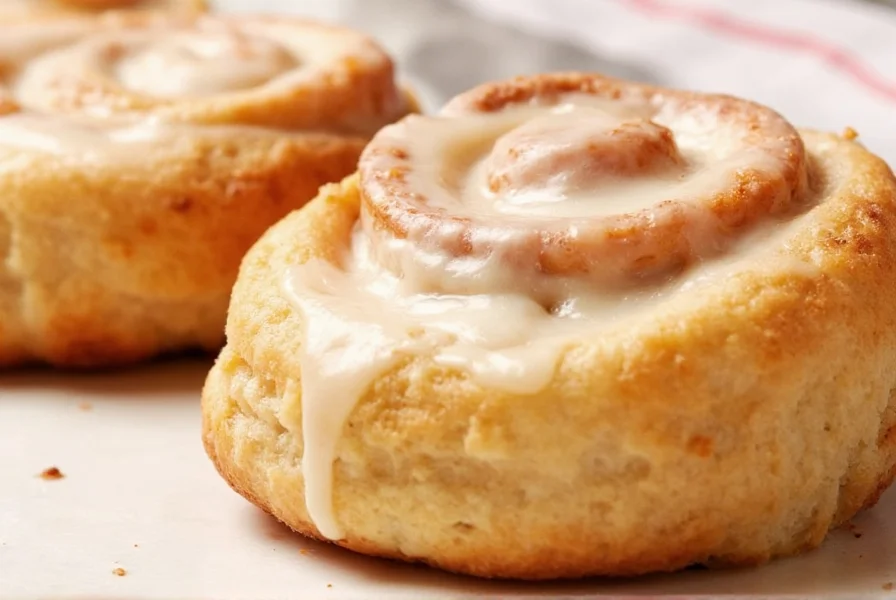The distinctive swirl pattern, aromatic cinnamon filling, and rich icing create a sensory experience that has made cinnamon rolls a staple in bakeries and homes globally. What sets them apart from other pastries is their unique combination of simplicity and indulgence - a humble dough transformed through careful rolling and baking into something extraordinary.
A Brief History of Cinnamon Rolls
Cinnamon rolls trace their origins to 1920s Sweden, where they were known as kanelbulle. These sweet buns quickly spread throughout Scandinavia and became deeply embedded in Nordic culture, particularly as part of fika - the Swedish tradition of taking a coffee break with pastries. Swedish immigrants brought the recipe to America, where it evolved with regional variations and became especially popular in the Midwest.
Cultural Significance Across Regions
While cinnamon rolls maintain their core identity, they've adapted to local tastes around the world:
| Region | Distinctive Characteristics | Cultural Context |
|---|---|---|
| Scandinavia | Cardamom-infused dough, pearl sugar topping | Central to fika culture, celebrated on Cinnamon Roll Day (October 4) |
| United States | Thicker icing, larger size, often with pecans | Breakfast staple, holiday tradition, commercial bakery favorite |
| Mexico | Conchas-inspired designs, sometimes with chocolate | Fusion with local pan dulce traditions |
What Makes Cinnamon Rolls Distinctive
Several factors contribute to why cinnamon rolls are iconic in baking culture:
The Sensory Experience
The moment cinnamon rolls enter the oven, they release an aroma that combines warm spices with sweet yeast dough - a scent scientifically proven to trigger positive emotional responses. The visual appeal of the spiral pattern reveals the generous cinnamon-sugar filling, while the texture offers a perfect contrast between the soft, pillowy dough and the slightly crisp edges.
Accessibility and Adaptability
Unlike many pastries requiring specialized equipment, cinnamon rolls can be made with basic kitchen tools. Their recipe has proven remarkably adaptable - accommodating dietary restrictions (gluten-free, vegan variations) while maintaining their essential character. This flexibility has helped cinnamon rolls remain relevant as eating habits evolve.
Role in Popular Culture
Cinnamon rolls have transcended their status as mere pastries to become cultural symbols. They feature prominently in:
- Television shows like Stranger Things (Eleven's favorite food)
- Hallmark holiday movies as symbols of comfort and tradition
- Social media trends, with #cinnamonroll generating over 2 million Instagram posts
- Commercial branding, from Cinnabon's global empire to local bakery identities
Why They've Maintained Popularity
Three key factors explain the enduring appeal of cinnamon rolls:
- Nostalgia factor - For many, the scent and taste evoke childhood memories of family breakfasts or holiday gatherings
- Community aspect - Baking and sharing cinnamon rolls creates social connections, from church bake sales to office potlucks
- Sensory satisfaction - The combination of textures and flavors provides a complete sensory experience that few pastries match

Traditional Preparation Methods
Authentic cinnamon roll preparation follows time-honored techniques that contribute to their iconic status:
The dough requires careful kneading to develop gluten structure, followed by a slow rise that develops flavor. The filling mixture typically combines cinnamon, sugar, and butter in precise ratios - too little cinnamon lacks impact, while too much can be overpowering. Professional bakers emphasize the importance of rolling the dough tightly enough to create distinct layers without compressing the dough.
Understanding why cinnamon rolls are iconic in baking reveals how this simple pastry has captured hearts worldwide through its perfect balance of tradition and adaptability, sensory appeal, and emotional resonance that continues to make it a beloved treat across generations.
Frequently Asked Questions
Why are cinnamon rolls considered iconic in baking culture?
Cinnamon rolls are iconic due to their perfect balance of sweet and spice, comforting aroma that triggers nostalgia, deep cultural roots in Scandinavian baking traditions, and universal appeal as a beloved breakfast pastry that has maintained popularity across generations worldwide.
What makes cinnamon rolls different from other pastries?
Cinnamon rolls stand out because of their distinctive swirl pattern revealing the cinnamon-sugar filling, the perfect contrast between soft dough and slightly crisp edges, and their unique combination of simplicity in ingredients with complexity in sensory experience. Unlike many pastries, they can be made with basic kitchen tools yet deliver extraordinary flavor.
How did cinnamon rolls become popular worldwide?
Cinnamon rolls originated in 1920s Sweden as kanelbulle and spread throughout Scandinavia as part of fika culture. Swedish immigrants brought them to America, where they evolved with regional variations. Their popularity grew through commercial bakeries like Cinnabon, media appearances in films and TV shows, and their adaptability to different cultural tastes while maintaining their essential character.
What are the key elements of a perfect cinnamon roll?
A perfect cinnamon roll requires: properly developed dough with ideal texture, a balanced cinnamon-sugar-butter filling (typically 2-3 tablespoons cinnamon per roll), tight but not compressed rolling technique, precise baking time to achieve golden brown color without drying, and icing that complements rather than overwhelms the pastry. The ideal ratio is approximately 60% dough to 40% filling.










 浙公网安备
33010002000092号
浙公网安备
33010002000092号 浙B2-20120091-4
浙B2-20120091-4